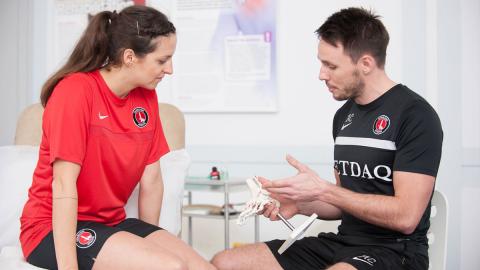In most cases, foot pain will not become persistent and with a change of footwear and simple exercises you will see improvement.
Injury and inflamed tissues usually improve in six to twelve weeks, but if your pain is not improving it is important to get a professional opinion. Some foot conditions do go on to become persistent and need long-term management such as arthritis.

Much of this management will be things you can do yourself after guidance from a professional.
A physiotherapist can guide you on:
- exercises to improve movement and strength
- graded loading/strengthening
- footwear advice
- changing your activity level or modifying tasks
- reducing load of tissues
- pain management
- how to improve your balance
- the need of walking aids
They may also guide you to your GP if further investigations are needed. A podiatrist may further help with specialist insoles once you have begun exercises to address tightness and weakness.
Symptoms to be aware of:
These symptoms are rare but you should contact a doctor if you experience any of them as there can be other causes for them:
- Pain that is waking or keeping you up at night
- Pain for over three months, or pain that is progressive and not eased.
- Unexplained swelling of your (may affect both feet or other joints too)
- Changes in sensation in your feet
- Changes to the shape of your foot
- Loss of power e.g. unable to pick your foot up or frequent tripping
- A skin rash, skin discolouration, ulceration or signs of infection
- Hot swollen and painful calf muscle







































